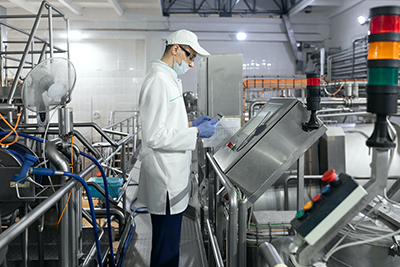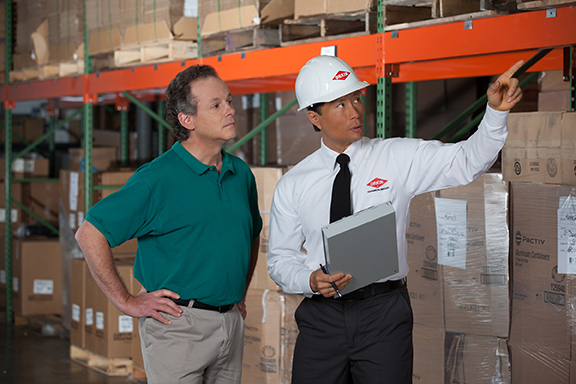COVID-19 has disrupted different sectors, and the food and beverage industry hasn’t been spared either. Despite all the new regulations that businesses had to put in place amid the global pandemic, one thing remained clear: There was still a need for food safety certifications.
However, with travel restrictions in place and strict regulations to curb the virus’s spread, in-house audits have become a thing of the past. Therefore, food and beverage companies have had to turn to remote audits to ensure they can still undergo the rigorous certification process.
Remote audits are a new concept, and it’s only fair that you don’t know how to go about it. This guide will highlight all the essential details about remote audits, why they are necessary, and how you can prepare for your first one ever.
Understanding Remote Food Safety Auditing
As the coronavirus hit the world, GFSI started exploring the feasibility of remote and virtual certification audits. In June, GFSI announced that it would support the use of information and communications technologies (ICT) during audits. The organization also updated its benchmarking requirements so that Certification program Owners could develop their own remote auditing procedures.
GFSI had been thinking of incorporating ICT in the audit processes, and the emergence of COVID-19 only accelerated the decision. Instead of doing away with in-person audits because of the risk of spread, GFSI used this opportunity to adopt instead of compromising strict food safety standards.
Benefits of a Remote Audit
Generally, audits help food and beverage companies maintain their safety standards compliance and certifications. During these times, the need to uphold these standards is high, mostly because of the strain on the healthcare system.
In addition to upholding standards, remote audits present several benefits.
- Cost Savings. Certifying bodies usually have to cater to travel expenses for the auditors. With remote auditing, auditors don’t need to travel, which helps them cut down their costs. Additionally, the process requires limited resources, easing the strain on the bodies and organization.
- Long-term record. Remote auditing will require the use of videos. These videos can be kept for future use, and the companies can use them to track their progress over time.
- Transparency. Usually, the food companies’ management and administration may not have access to the audit report. However, with remote auditing, the auditors give real-time insight, and the managers get authentic reports on their certification audits.
- Secure storage. Remote audit reports will be stored on centralized clouds that are safe. Only the customer and the auditor have access to the audit reports, which ensures the reports’ security.
How to Run a Remote Audit
Remote audits are usually conducted partially through either a walk-through video or installed cameras.
Via a walk-through video. An organization may have one of its employees record the company’s operations as they walk through different departments. For this approach, they could either use glasses equipped with a camera, a helmet with a mounted camera, or a hand device.
Although this method is cost-effective, it may not be the best since the employee chooses what to show and could be biased.
Via installed cameras. This second method involves having cameras installed in different areas in the company. Recorded or live feeds from the camera are then chosen randomly and used during the audit. This method of remote auditing may not be too effective since employees may choose to remain compliant when they know the cameras are on.
Steps in a Remote Audit
The remote auditing process is quite similar to the in-house auditing process. However, companies must first assess themselves to ensure the remote process is successful. The following are the steps you need to follow when performing a remote audit.
1. Request the Remote Audit
You must first notify the certifying body that you need a remote audit. The certifying organization will then determine whether the audit is a viable option for your company. In some cases, remote audits may not be an option because of the COVID restrictions or other reasons.
2. Carry Out a Self-assessment
Once you have the go-ahead, the company needs to conduct a self-assessment. Here, you answer questions about the company’s programs, facilities or any changes to the operations process. You must also look at the previous audit report to determine the trend over the last year.
3. Technical Review
After submitting your self-assessment, the technical team will review your answers. They will then determine whether the company’s record-keeping, systems and procedures could be audited remotely. The team then decides whether they’ll conduct a remote audit or if the company should stick to onsite audits.
4. Have the Remote Audit
After the team approves your remote audit, you can start preparing for it. The team will recommend the best way to have the audit. After a successful audit, your company can receive certification. In a remote audit, the reports will be shared digitally over a private portal. The team will also give its recommendations over the portal. Also, your company may require an onsite audit at later time.
How to Prepare for a Remote Audit
Once the technical team gives you the go-ahead for a remote audit, you’ll need to start preparing for it. The following are five things you can do to ensure the process is smooth and successful.
1. Identify the Key Personnel in the Company
During an onsite audit, you should always have some of the company’s management around to ensure everything runs as intended. It would be best if you had these same people support your remote audit. Whether they are in the office or working remotely, these personnel should know they must be available. You could choose to use calls or video conferencing to ensure they’re involved in the entire process.
2. Identify the Needs with the Audit Team
You will have to find out from the audit team the requirements for the remote audit. The team will let you know the preferred method of conferencing and take you through the process. They will tell you everything you must do and sort out any issues before the actual audit date.
3. Digitize Your Documents
After finding out what you need, your next step should be to digitize any necessary documents. You will be sharing the documents over an online portal, and it is best to have everything ready before the audit day.
4. Gather Documentation From Auditors
Another requirement will be to send some documentation to your auditors. This documentation is the same required for onsite audits. Some of what to include is the visitor’s policy and any NDAs. You should gather all these documents early enough so that you have time to correct any issues that may arise.
5. Check the Internet Connection
Your remote audit will probably require some IT. Therefore, you should ensure your internet connection is reliable and that all the systems work as they should. Everyone involved in the audit process must ensure that their connection will remain reliable during the entire process.
Tips for Working with Remote Auditors
The entire concept of remote auditing may be new for all parties involved. Everyone has something to learn, but here are some of the things that food and beverage companies can do to make everything easier for all parties.
- Ensure you have the right technology, including webcams.
- Minimize the disruptions during the audit time by ensuring you’re in a quiet environment.
- Do a test run to ensure all the systems are working.
- Be calm during the entire audit process, including during the preparation period.
Although COVID-19 made it possible to transition to remote audits, there are high chances that GFSI and food and beverage companies will stick to them after the pandemic. They are convenient and present several benefits. Therefore, you just might need these actionable tips for more than only your first remote audit.























